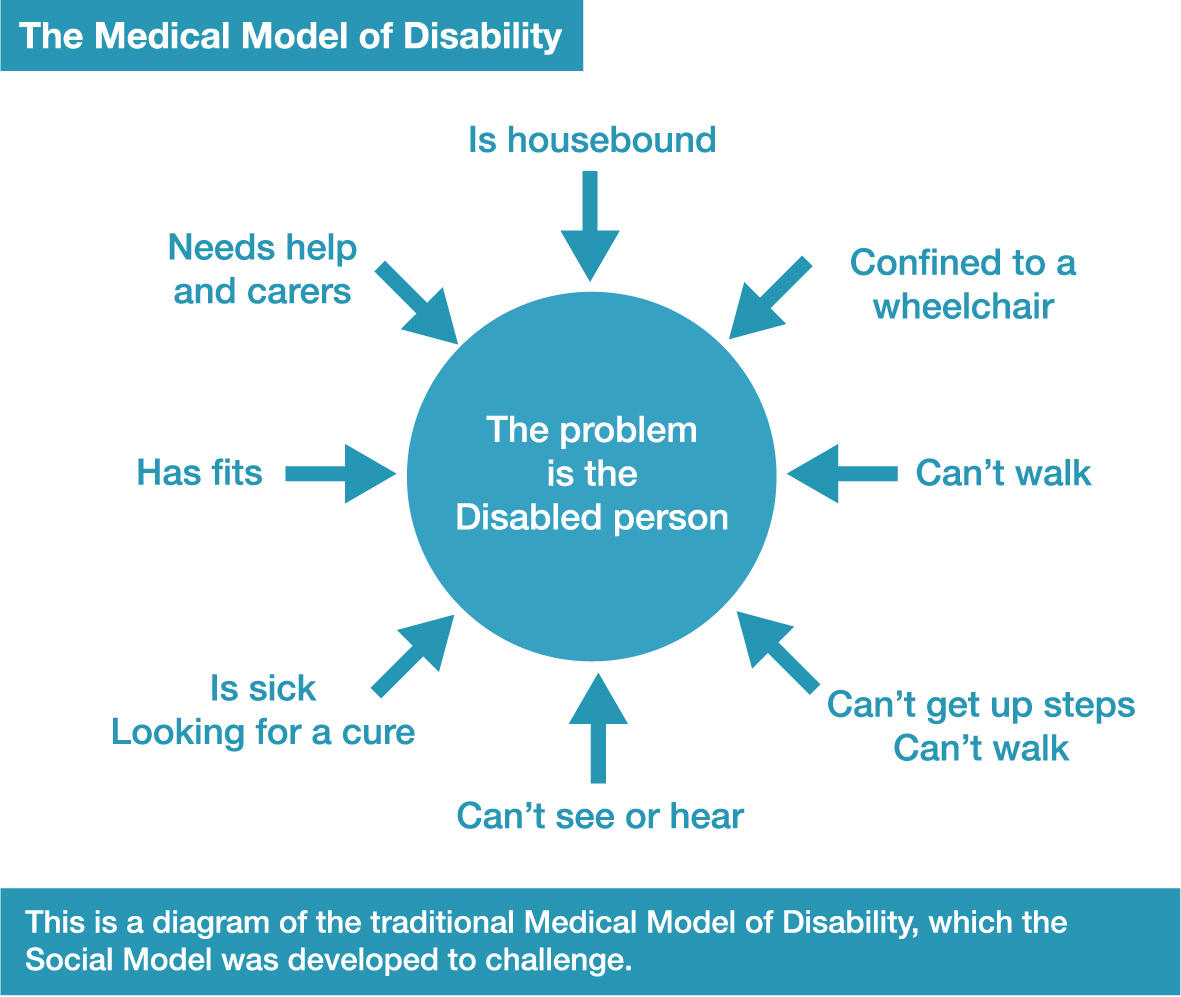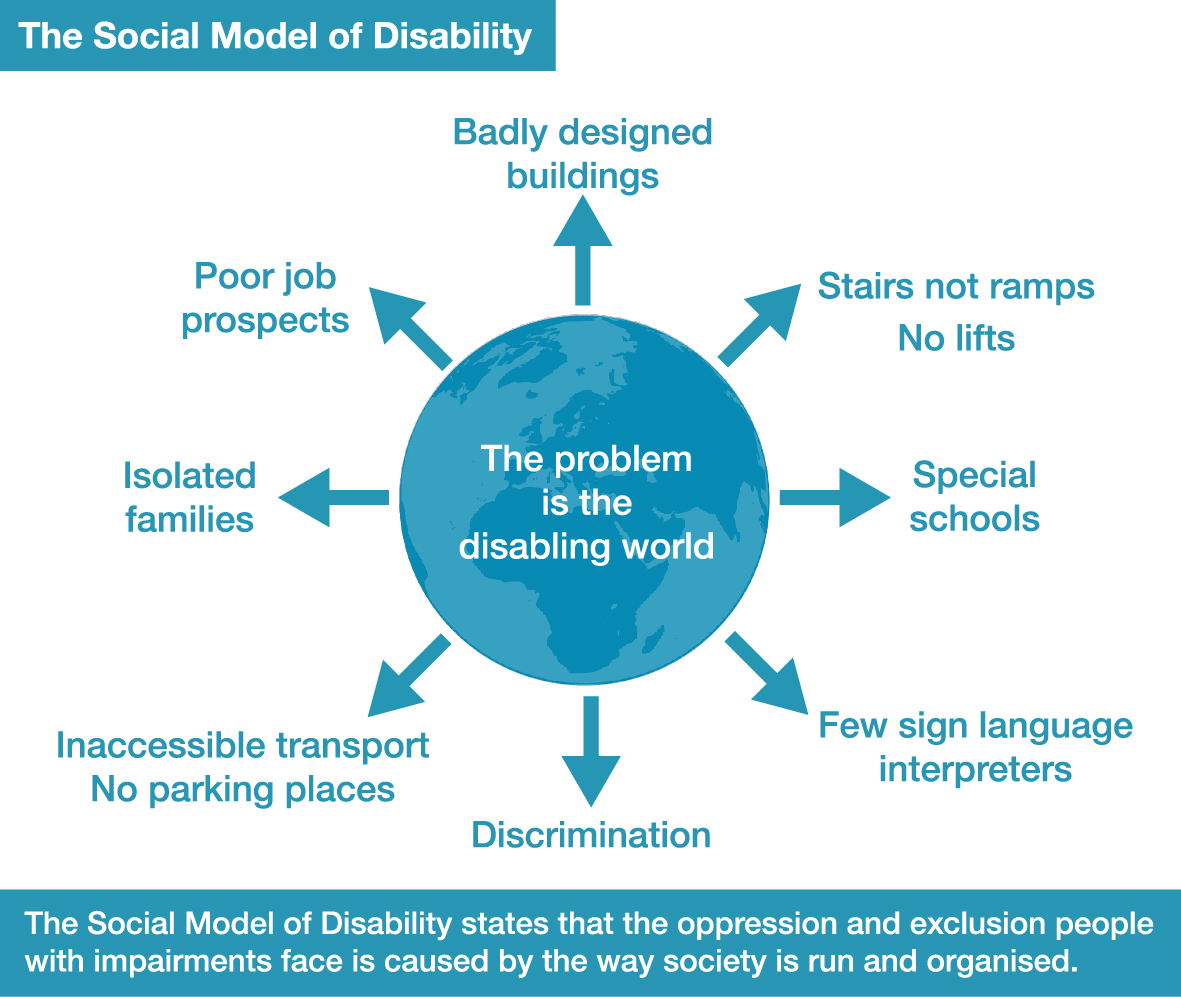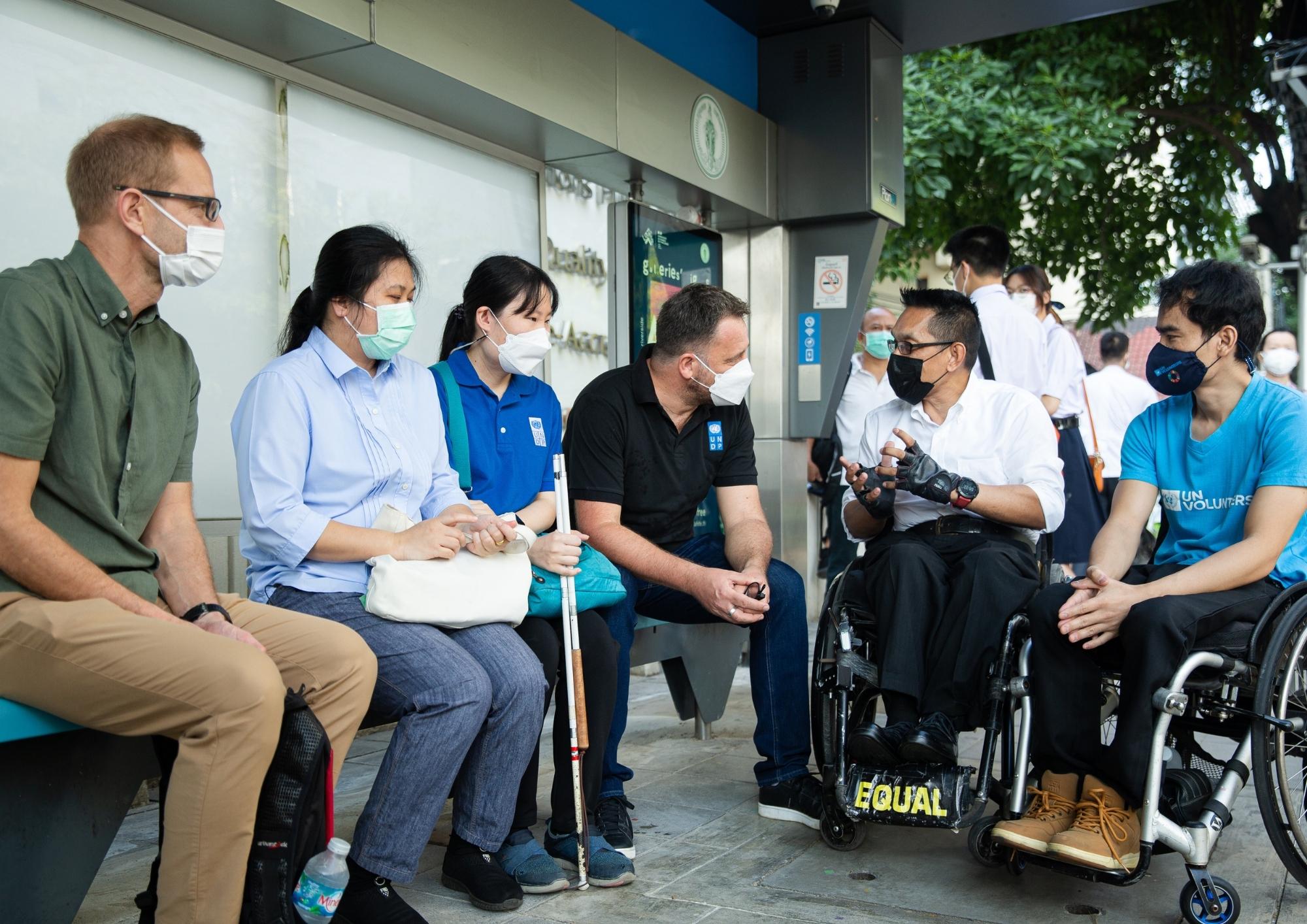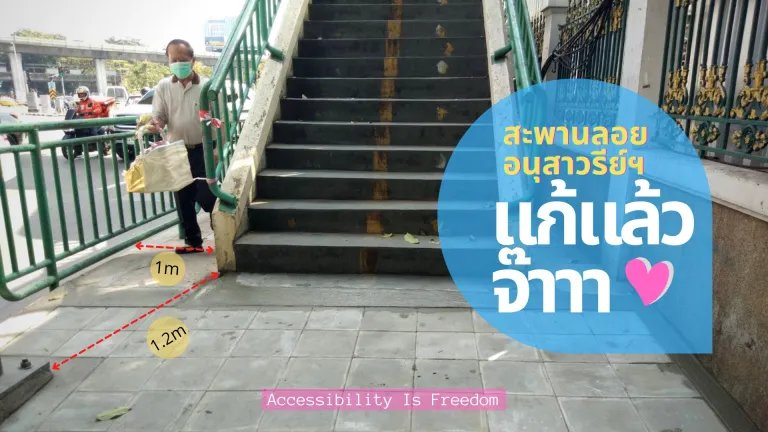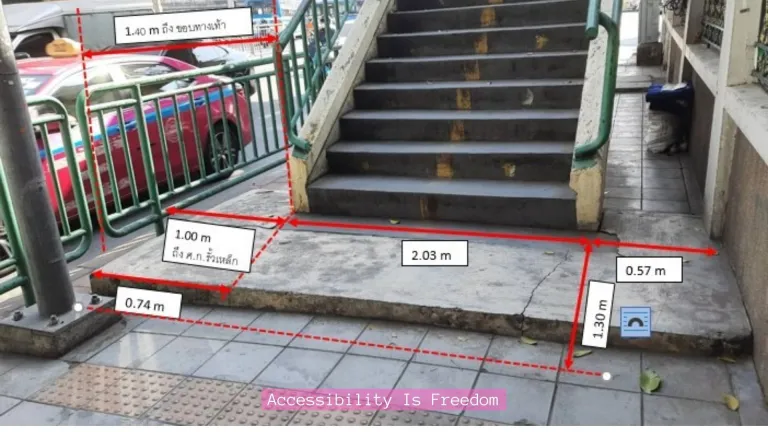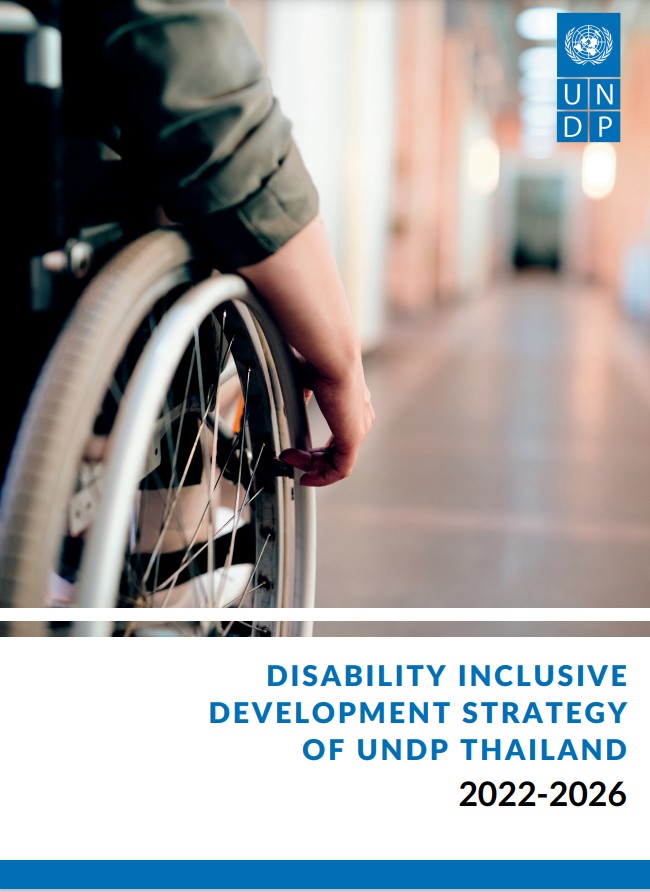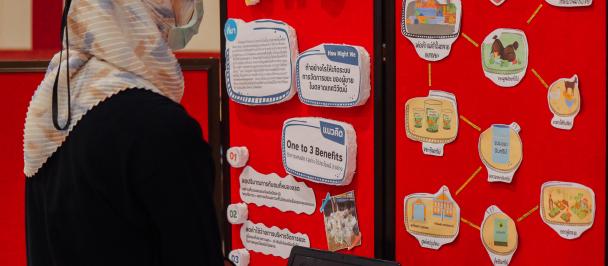Introduction
Development in transportation and rapid transit system allows us to travel faster, safer, and more reliable. Still, rapid development comes with the risk of leaving some people behind. Information technology and digitalization enable us to communicate further and more efficiently with less cost. Still, mass-market technology may exclude people with limited access to quality services and therefore not be able to gain equal benefits.
To celebrate the Global Accessibility Awareness Day, Accelerator Lab invites you to explore the accessibility story of people with disabilities in Thailand through UNDP Thailand's initiatives.
What is Accessibility?
Disability is often seen as a personal misfortune that adds weight to family burdens and social responsibility. This concept was based on the medical model of disability, which regards disability as physical-cognitive-mental imperfections. This ill perception became the social norm, and evidence showed that most state supports were rather charitable and assistance-based.
On the contrary, the social model views disability as "diversity." People with disabilities face multifaceted societal barriers, including the built environment, attitudes, and social structures that prevent them from living dignified life. This social model conceptual framework does not deny the existence of a disability. It, however, emphasizes on social changes necessary to eliminate obstacles that impede access to opportunities for people with disabilities.
Photo description: diagrams of the medical model of disability and social model of disability from The Social Model of Disability - Inclusion London
Photo description: diagrams of the medical model of disability and social model of disability from The Social Model of Disability - Inclusion London
Dis-ability is part of everyone's life. For nearsighted people, life without eyeglasses would be a challenge. Similarly, a trip to the mountain top without proper roads would be difficult for tourists, meaning they are deprived of the right to travel. Both the eyepiece and the roads are essential tools and infrastructure enabling us to access opportunities. Isn't it fair to conclude that if a product, device, service, vehicle, or environment were deliberately designed to "enable" people with disabilities to "access" and live their life on an equal footing with others, then disability would no longer be a problem. This is what accessibility truly means.
Accessibility is directly related to Universal Design, a design process for everyone from which non-disabled people and people with disabilities could equally benefit.
Accessibility in Public Transportation
Access to public transport is a fundamental right that any citizen is entitled to. Public transport not conducive for people with disabilities indicates that they are deprived of the opportunity to attend school or work as well as partake in social activities.
We found that one of the best ways to get insight into the issue quickly is to experience a day of disability.
Together with its partners, Transportation for All (T4A) and Accessibility is Freedom, UNDP Accelerator Lab Thailand organized an activity to understand and raise awareness of accessibility. The Finnish Ambassador to Thailand joined UNDP representatives on a journey with people with disabilities to learn about challenges facing people with disabilities commuting on public transport. The journey was broadcasted as a short documentary Bangkok Accessibility Journey - Experimentation on Public Transportation Challenges for PWDs - YouTube, portraying actual accessibility and calling for collaborative actions from the government, private sector, and civil society to leave no one behind.
Photo description: Bangkok Accessibility Journey on 21 November 2021
Soon after, the Bangkok Metropolitan Administration (BMA) removed the concrete blocks, which were the first obstacles wheelchair users encountered on the walking route around the pedestrian overpass near the Victory Monument. Also, Accessibility is Freedom published on its website, the Bangkok Mass Transit System (BTS) database and Metropolitan Rapid Transit (MRT) train system access points in Bangkok collected from its fieldwork and network partners. The database includes information about the elevators available in all stations and between floors, toilets for wheelchair users, and guiding/warning tactile blocks for people with visual impairments. It is hoped that policymakers will find the data helpful and take action to make public transport more accessible for all.
Photo description: photos of a pedestrian overpass near the Victory Monument before and after the activity from Accessibility Is Freedom
Photo description: photos of a pedestrian overpass near the Victory Monument before and after the activity from Accessibility Is Freedom
Digital Accessibility
Apart from physical accessibility, digital accessibility is another essential side of fostering inclusion and ensuring equal opportunity for people with disabilities. Advances in IT have significantly improved everyone's quality of life. Affordable smartphones and reasonable internet fees can enable people with disabilities to access information, news, and services from the public and private sector the same as people without disabilities if accessibility is considered in designing and developing digital products, including websites, mobile apps, and devices.
Commuting
Digital accessibility can play a significant role in accommodating people with disabilities with commuting from place to place. To illustrate, getting a taxi can be very challenging and require assistance. Mobile applications such as Uber and Grab, which work well with screen readers, allow drivers (driver/rider) and travelers to directly communicate and empower people with disabilities to access transport services themselves. With these apps, pick-up locations can be arranged and well-understood by both drivers and passengers.
Similarly, navigation applications are extremely useful, especially for visibility impaired people, as they know their whereabouts and the direction they are headed to. Without advanced technology, this could have remained a dream.
Office functions
Computer screen readers such as JAWS and NVDA help blind people hear texts on screens. Trained blind people can use the Ms package, including the word process, spreadsheet and presentation, emailing and messaging, and coding.
Similarly, hearing-impaired people can read texts while using Zoom or Teams, thanks to the close caption feature that converts conversation into text. This allows the hearing impaired to fully and equally participate in meetings.
Digital technology also creates new job opportunities for which several people with disabilities have perfect skillsets. An example is Vulcan Coalition and UNDP Thailand project entitled the COVID-19 Socio-economic Response and Recovery Project, funded by Japan. The project recognized the unique skillsets people with disabilities have. For instance, the blind can process sounds twice as fast as others. Deaf people have enhanced vision and excel in seeing details. People with autism have an increased capacity for extended focus and can capture patterns well. These unique abilities provided innovative solutions that improved the AI system's quality.
While some of the work had to be done online during the COVID-19 crisis, we have undeniably become part of the rapid digital transformation. What's more, thanks to technology, people with disabilities can work just like everybody else.
However, a poorly designed platform without accessibility could exclude people with disabilities from its full benefits. For instance, the platform with images without captions or a document saved as an image would disrupt the screen reader system.
In Thailand, guidelines for making accessible websites have already been developed, and this is the opportunity for UNDP to complement the initiatives.
Photo Description: Disability Inclusive Development Strategy of UNDP Thailand 2022-2026
Disability Inclusive Development Strategy of UNDP Thailand 2022-2026
Realizing that Thailand will not be able to meet the Sustainable Development Goals (SDGs) if people with disabilities remain left behind and do not participate in the development, UNDP Thailand has formulated a Disability Inclusive Development Strategy to support and guide the implementation of its Country Programme (2022-2026) and reaffirms the centrality of the "Leave No One Behind" principle at the core of Agenda 2030 and the UNDP Strategic Plan. It adopts a rights-based approach centered on empowerment, inclusion, equity, and human development and determines three priorities: promoting equal rights, economic empowerment, and mainstream disability inclusion.
In implementing this strategy, UNDP Thailand Accelerator Lab has worked with duty bearers on capacity-building initiatives on accessibility and empowered people with disabilities as right holders to voice their challenges in order to ensure that they have access to equal rights. At the Bangkok Accessibility Journey, the Bangkok Metropolitan Administration (BMA), Bangkok Mass Transit System (BTS), and the Department of Empowerment of People with Disabilities (DEP) joined the walk with people with disabilities and talked about their roles and commitment to resolving the challenge for people with disabilities using public transportation. UNDP Accelerator Lab will also leverage UNDP's capacity for SDG integration to ensure that accessibility and universal design are mainstreamed in the policy-making process and project design so people with disabilities are not left behind in the country's development.
Conclusion
When people with disabilities have full access to their rights and can participate as active citizens meaningfully, they can live a dignified life without discrimination. In order to widen the opportunity for people with disabilities, accessibility must be provided to everyone. UNDP's innovation unit, Accelerator Lab, is committed to exploring, experimenting, and developing solutions to unleash the abilities of people with disabilities with the realization that we will leave no one behind, both physically and digitally.

 Locations
Locations
